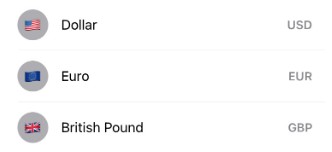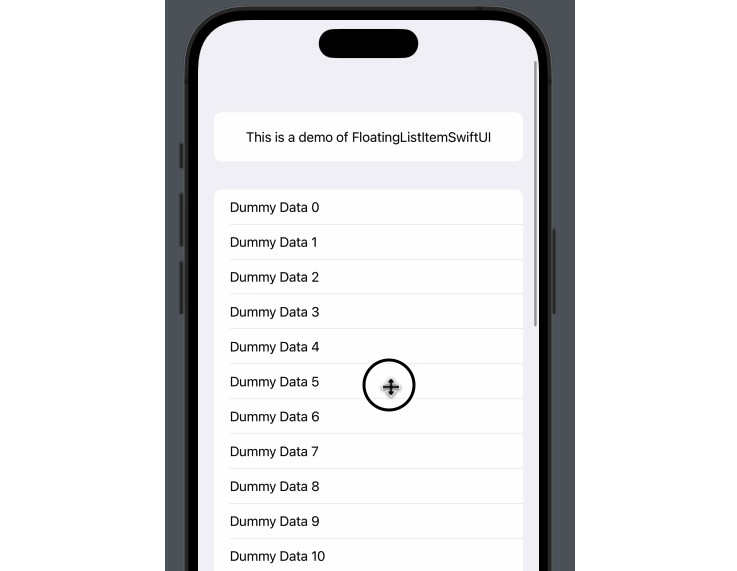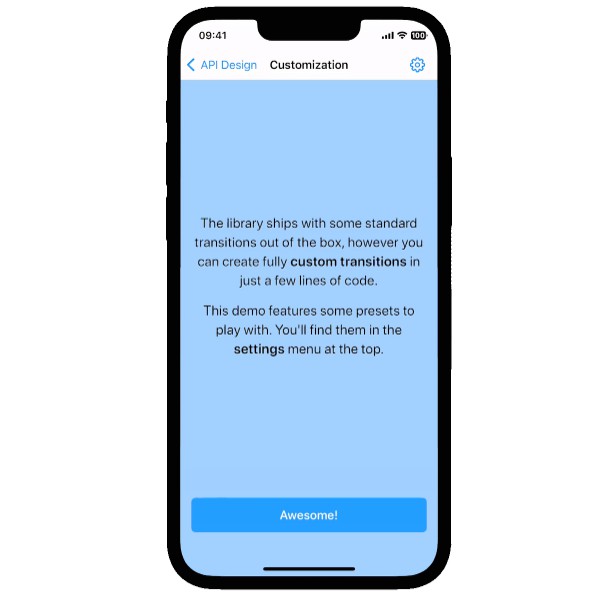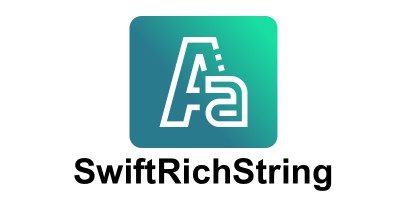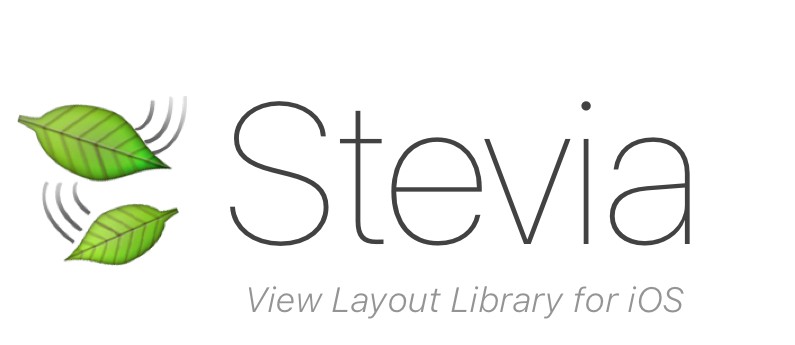Pin
? A tiny library that makes working with AutoLayout easier.
A library for those who don’t want to use big libraries like SnapKit, but the standard NSLayoutConstraint creation seems too verbose.
Example with Pin ?
import UIKit
import Pin
class CurrencyCell: UITableViewCell {
override init(style: UITableViewCell.CellStyle, reuseIdentifier: String?) {
super.init(style: style, reuseIdentifier: reuseIdentifier)
contentView.addSubview(bodyView)
bodyView.addSubviews([flagLabel, titleLabel, codeLabel])
Pin.activate([
bodyView.pin.horizontally(offset: 15).vertically(),
flagLabel.pin.start().size(36).centerY(),
titleLabel.pin.after(flagLabel, offset: 15).vertically(),
codeLabel.pin.after(titleLabel, offset: 15).end().vertically()
])
}
let bodyView = UIView()
let flagLabel = UILabel()
let titleLabel = UILabel()
let codeLabel = UILabel()
}
Example without Pin ?
import UIKit
class CurrencyCell: UITableViewCell {
override init(style: UITableViewCell.CellStyle, reuseIdentifier: String?) {
super.init(style: style, reuseIdentifier: reuseIdentifier)
bodyView.translatesAutoresizingMaskIntoConstraints = false
flagLabel.translatesAutoresizingMaskIntoConstraints = false
titleLabel.translatesAutoresizingMaskIntoConstraints = false
codeLabel.translatesAutoresizingMaskIntoConstraints = false
contentView.addSubview(bodyView)
bodyView.addSubview(flagLabel)
bodyView.addSubview(titleLabel)
bodyView.addSubview(codeLabel)
NSLayoutConstraint.activate([
bodyView.leadingAnchor.constraint(equalTo: contentView.leadingAnchor, constant: 15),
bodyView.trailingAnchor.constraint(equalTo: contentView.trailingAnchor, constant: -15),
bodyView.topAnchor.constraint(equalTo: contentView.topAnchor),
bodyView.bottomAnchor.constraint(equalTo: contentView.bottomAnchor),
flagLabel.leadingAnchor.constraint(equalTo: bodyView.leadingAnchor),
flagLabel.centerYAnchor.constraint(equalTo: bodyView.centerYAnchor),
flagLabel.widthAnchor.constraint(equalToConstant: 36),
flagLabel.heightAnchor.constraint(equalToConstant: 36),
titleLabel.leadingAnchor.constraint(equalTo: flagLabel.trailingAnchor, constant: 15),
titleLabel.topAnchor.constraint(equalTo: bodyView.topAnchor),
titleLabel.bottomAnchor.constraint(equalTo: bodyView.bottomAnchor),
codeLabel.leadingAnchor.constraint(equalTo: titleLabel.trailingAnchor, constant: 15),
codeLabel.trailingAnchor.constraint(equalTo: bodyView.trailingAnchor),
codeLabel.topAnchor.constraint(equalTo: bodyView.topAnchor),
codeLabel.bottomAnchor.constraint(equalTo: bodyView.bottomAnchor)
])
}
let bodyView = UIView()
let flagLabel = UILabel()
let titleLabel = UILabel()
let codeLabel = UILabel()
}
Methods
// titleLabel.leading == titleLabel.superview.leading
// Use addSubview(titleLabel) before it
titleLabel.pin.start()
// titleLabel.leading == iconView.leading
titleLabel.pin.start(iconView)
// titleLabel.leading == iconView.leading + 10
titleLabel.pin.start(iconView, offset: 10)
// titleLabel.leading == titleLabel.superview.safeAreaLayoutGuide.leading
titleLabel.pin.start(safe: true)
// titleLabel.trailing == titleLabel.superview.trailing - 10
titleLabel.pin.end(offset: -10)
// titleLabel.top == titleLabel.superview.top
titleLabel.pin.top()
// titleLabel.bottom == titleLabel.superview.bottom
titleLabel.pin.bottom()
// titleLabel.leading == titleLabel.superview.leading + 10
// titleLabel.trailing == titleLabel.superview.trailing - 10
titleLabel.pin.horizontally(offset: 10)
// titleLabel.top == titleLabel.superview.top
// titleLabel.bottom == titleLabel.superview.bottom
titleLabel.pin.vertically()
// contentView.leading == contentView.superview.leading + 10
// contentView.trailing == contentView.superview.trailing - 10
// contentView.top == contentView.superview.top + 10
// contentView.bottom == contentView.superview.bottom - 10
contentView.all(offset: 10)
// titleLabel.leading == iconView.trailing + 10
titleLabel.pin.after(iconView, offset: 10)
// iconView.trailing == titleLabel.leading - 10
iconView.pin.before(titleLabel, offset: -10)
// titleLabel.top == navigationBar.bottom + 10
titleLabel.pin.below(navigationBar, offset: 10)
// titleLabel.width == 200
titleLabel.pin.width(200)
// titleLabel.height == 20
titleLabel.pin.height(20)
// codeLabel.width == titleLabel.width
codeLabel.pin.width(titleLabel)
// codeLabel.height == titleLabel.height
codeLabel.pin.height(titleLabel)
// codeLabel.width <= titleLabel.width
codeLabel.pin.add(
attr: .width,
relation: .lessThanOrEqual,
to: titleLabel,
attr: .width
)
Activate and deactivate
let top = titleLabel.pin.top()
top.activate()
top.deactivate()
Activation array of constraints is more efficient than activating each constraint individually.
Pin.activate([
bodyView.pin.horizontally(offset: 15).vertically(),
flagLabel.pin.start().size(36).centerY(),
titleLabel.pin.after(flagLabel, offset: 15).vertically(),
codeLabel.pin.after(titleLabel, offset: 15).end().vertically()
])
Safe area
override func viewDidLoad() {
super.viewDidLoad()
view.addSubView(toolBar)
toolBar.pin
.start(safe: true)
.end(safe: true)
.top(safe: true)
.height(55)
.activate()
}
Body
// Add body (bodyView fill view)
view.addBody(bodyView)
// Add body with safe area
view.addBody(bodyView, safe: true)
// Add body with insets 15
view.addBody(bodyView, insets: .all(15))
// Add body with horizontal insets 15
view.addBody(bodyView, insets: .horizontal(15))
Priority
// Set priority for each constraint
titleLabel.pin
.start().priority(.defaultHeight)
.end().priority(.defaultLow)
// Set priority for all constraints
titleLabel.pin.start().end().priorityForAll(.defaultHeight)
Access to NSLayoutConstraint
let start = titleLabel.pin.start().constraints.last
start.constant = 30
start.isActive = true
Extensions
You can add own extensions:
extension Pin {
public func horizontallyBetween(
_ first: UIView,
_ second: UIView,
offset: CGFloat = 0
) -> Self {
self.after(first, offset: offset)
.before(second, offset: -offset)
}
public func verticallyBetween(
_ first: UIView,
_ second: UIView,
offset: CGFloat = 0
) -> Self {
self.add(attr: .top, to: first, attr: .bottom, constant: offset)
.add(attr: .bottom, to: second, attr: .top, constant: -offset)
}
}
Right to left languages
Methods start(), end(), after(), before() support rtl languages by default. If you want to force direction then use:
semanticContentAttribute = .forceLeftToRight
Swift Package Manager
https://github.com/mezhevikin/Pin.git
